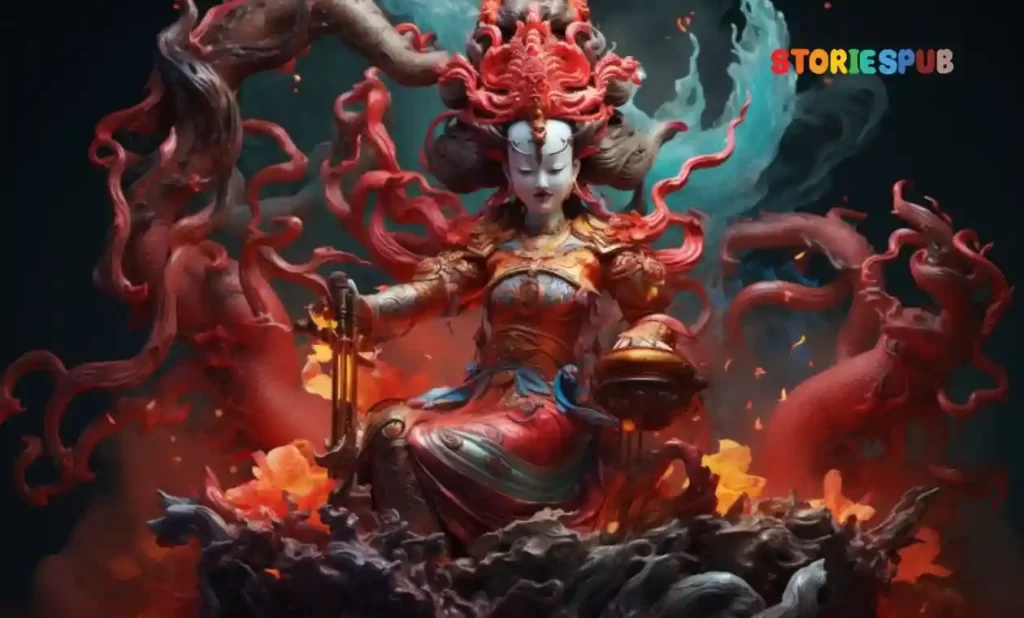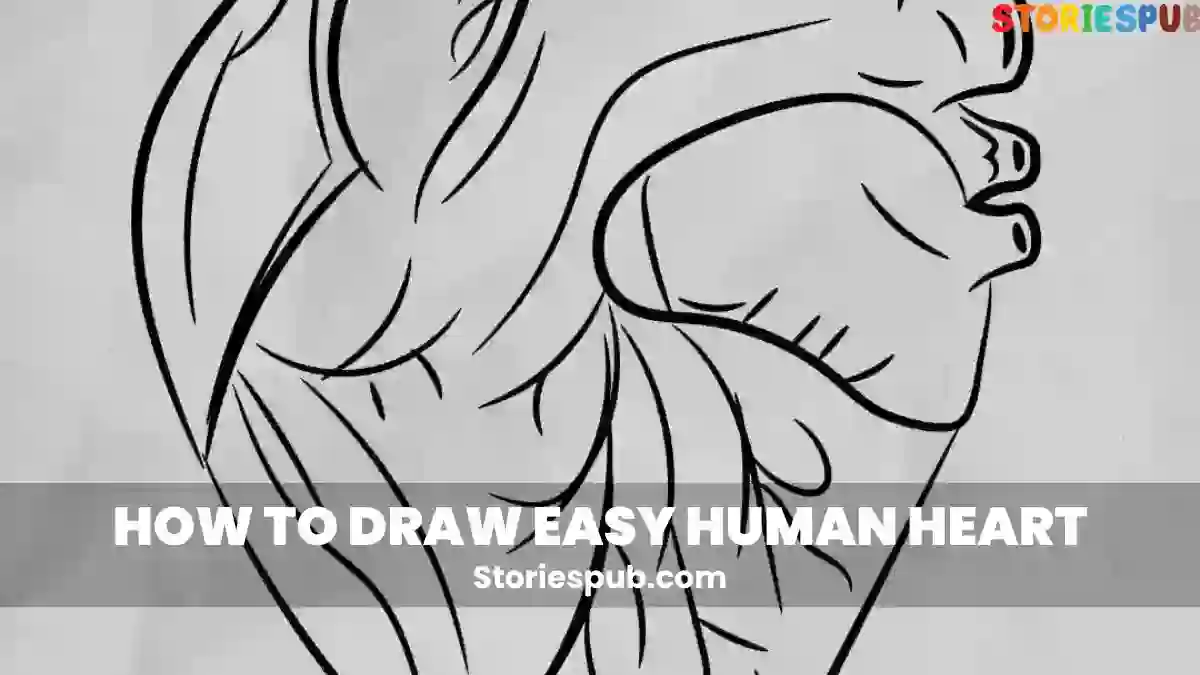Summarize this Article with:

In Chinese mythology, Nezha is a popular deity who is widely revered for his protection, bravery, loyalty and strength. He has been depicted in various forms throughout history and has gained immense popularity in modern media as well. This article aims to provide a complete overview of Nezha’s life story, powers and abilities, adventures and battles, legacy and influence.
The Significance of Nezha in Chinese Mythology
Nezha is considered one of the most important figures in Chinese mythology due to his divine powers and the numerous heroic feats he accomplished during his lifetime. In many ways he can be compared to Hercules from Greek mythology or Thor from Norse mythology.
According to legend, Nezha was born with three heads and six arms but was later transformed into a normal human form through divine intervention. Despite this transformation he still maintained his supernatural abilities which included mastery over the elements such as air, water and fire.
The story of Nezha is deeply rooted in Chinese culture as it represents the idea that even ordinary people can become gods by channeling their inner strength to achieve extraordinary feats. His tale is often used as an allegory for personal growth and self-improvement.
Nezha’s Various Names and Titles
In different parts of China, Nezha is known by different names such as Na Zha or Li Nezha which reflects the rich cultural diversity within China itself. The name Na Zha (哪吒) comes from Buddhist scripture where it originally referred to a protective deity that rides on a lion-like creature known as a Xiezhi (獬豸).
Meanwhile the name Li Nezha (李哪吒) is associated with the deity’s association with the Li family. Nezha is also known by several titles such as “Third Prince” or “God of Protection”.
The title of “Third Prince” comes from the fact that Nezha was the third son of his father, General Li Jing. This title refers to Nezha’s royal status and his powerful position within Chinese mythology.
Meanwhile, “God of Protection” refers to Nezha’s reputation for protecting people from harm and offering divine assistance to those who call upon him. As a result, Nezha has become an important symbol of protection, bravery, loyalty and strength in China and continues to inspire generations even beyond national borders.
The Origin Story of Nezha
According to Chinese mythology, Nezha was born as the third son of Li Jing, a high-ranking general in the Heavenly Court. However, his birth was anything but typical.
As the story goes, Nezha was actually born as a ball of flesh from his mother’s womb instead of a fully formed baby. This unusual occurrence led Li Jing to believe that he had given birth to a demon-like creature and he attempted to kill him.
However, the flesh ball transformed into a young boy and revealed himself as his father’s son. The Heavenly Emperor intervened and granted Nezha three magical items that would help him control his powers: the Wind Fire Wheels, the Red Armillary Sash, and the Fire-Tipped Spear.
Nezha’s Childhood and Training
As a child, Nezha grew up under the tutelage of his father Li Jing who trained him in martial arts and warfare. But despite his abilities in combat, Nezha was also known for being mischievous. In one such instance, Nezha angered Ao Guang – Dragon King of East Sea by accidentally killing his third son while playing with him.
In order to appease Ao Guang’s wrath and avoid war with this powerful deity who controlled water resources on earth., Li Jing offered up one of his own sons – Er Langshen – as compensation for Nezha’s actions. However ,NeZa couldn’t tolerate this exchange and decided to take matters into his own hands by sacrificing himself instead .
He did so by setting himself alight with divine fire which burned away all impurities from within him; this left only pure essence behind that gave rise to new life altogether. Afterwards he reappearred alive albeit in new form , reincarnated multiple times over course of Chinese history.
The Significance of Nezha’s Childhood
Nezha’s childhood and training are significant in his development as a protector of the people, exhibiting bravery and loyalty towards his family and friends. His willingness to sacrifice himself for his brother’s sake demonstrates a sense of selflessness that is often associated with the divine. Furthermore, Nezha’s playful, mischievous nature also adds to his likability as a character.
His ability to balance both serious combat skills with a sense of humor makes him relatable to audiences of all ages. Overall, understanding Nezha’s early life is essential in comprehending the values he represents in Chinese culture today: protection, bravery, loyalty and divine intervention.
Powers and Abilities of Nezha
Overview of Nezha’s Supernatural Powers
The god Nezha is known for possessing a wide range of supernatural powers. One of his most notable abilities is the ability to control the seas.
This power comes from Nezha’s defeat of the Dragon King, Ao Guang. After this battle, Nezha was able to command the oceans and calm storms.
In addition to controlling the seas, Nezha also has immense strength and speed that make him a formidable opponent in battle. He can jump great distances in a single bound and move at incredible speeds that allow him to evade attacks.
Nezha also has an extraordinary level of control over fire, which he can use both offensively and defensively. His ability to manipulate flames comes from his famous weapon, the Fire-Tipped Spear.
Commanding Wind with Ease
Another remarkable power that sets Nezha apart from other gods is his ability to command the wind. He can create powerful gusts that can knock down walls or send enemies flying through the air.
This power originates from a pair of enchanted wheels called the Wind Fire Wheels. These wheels allow him to travel at high speeds and use wind as a weapon against his foes.
Additionally, these wheels give him an advantage in battles fought on land as well as at sea. With them, he can maneuver quickly around opponents or escape danger when necessary.
Description of Nezha’s Famous Weapon: The Wind Fire Wheels
The Wind Fire Wheels are among Na Zha’s most famous weapons, represented as large golden or iron rings that spin around him as he moves. These magical wheels enable Na Zha to travel at incredible speeds on land or water while harnessing powerful winds for offense or defense wherever they go; they represent not only an invaluable source of mobility but also an effective weapon capable of causing significant damage to any enemy.
With these wheels, Na Zha can quickly move from one place to another, making it difficult for his enemies to keep up with him. He can also use the wheels to create powerful gusts of wind that can knock down walls or send foes flying through the air.
In battle, Na Zha’s Wind Fire Wheels are a potent weapon as well. When he spins them rapidly around himself, they act as a shield that deflects incoming attacks while at the same time sending out bursts of energy that can strike down enemies within range.
Triumph Over Evil
Nezha’s powers and abilities cause him to become a symbol for protection and triumph over evil. In Chinese culture, he is often seen as a protector of children and families due to his bravery in standing up against evil forces.
His story has been retold countless times throughout history and continues to inspire people today. As an emblem of bravery, loyalty, and protection, Nezha remains an important figure in Chinese mythology and culture.
Adventures and Battles
Defeat of Dragon King Ao Guang
One of Nezha’s most famous battles was against the Dragon King Ao Guang. According to legend, Ao Guang had been causing havoc in the local towns and villages by flooding them with water from his underwater kingdom. Nezha, being the protector of his people, decided to take action and confront the dragon king.
With his Wind Fire Wheels and other supernatural powers, Nezha was able to defeat Ao Guang and force him to promise not to cause any more harm to the humans living near his kingdom. This victory demonstrated Nezha’s bravery in standing up against a powerful enemy who was causing harm to innocent people.
Battle Against the Third Prince
Another notable battle that Nezha participated in was against the Third Prince. This prince wanted revenge on Nezha for killing his brothers, who were evil demons disguised as princes. In order to defeat Nezha, he enlisted the help of powerful demons and monsters.
Despite being outnumbered and outmatched, Nezha fought valiantly using his Wind Fire Wheels and other abilities. He ultimately emerged victorious, further demonstrating his loyalty to protect his people from those who would do them harm.
Symbolism in Battles
These battles are more than just exciting tales of combat; they also have significant symbolic meaning within Chinese mythology. The battle with Dragon King Ao Guang represents a struggle between order (represented by humans) and chaos (represented by dragons), while the fight against Third Prince embodies a conflict between good (represented by Nezha) and evil (represented by demons).
Furthermore, these stories demonstrate how important it is for individuals like Nezha – protectors of their people -to be brave, loyal, and willing to fight for what is right. These qualities are still revered in Chinese culture today, and are seen as important virtues for leaders and heroes.
Nezha’s Legacy in Modern Media
Over the years, Nezha’s story has been retold in many different forms of media. He has appeared in movies, TV shows, comics, video games, and more.
In many of these iterations, his battles against Dragon King Ao Guang and Third Prince are often featured prominently. One of the most famous modern adaptations is the 2019 Chinese animated film “Ne Zha,” which tells a new version of Nezha’s origin story.
This film grossed over $700 million worldwide and is now one of the highest-grossing animated films ever made. Through these various adaptations, Nezha’s legacy as a symbol of bravery, loyalty, and protection continues to live on in modern times.
Legacy and Influence
Na Zha in Chinese Culture
The story of Na Zha has played a significant role in Chinese culture throughout history. The character is often portrayed as a symbol of protection, bravery, and loyalty, making him an important figure in Chinese mythology.
Due to his popularity, the story of Na Zha has been adapted into many forms of media over the years including television shows, movies, and comics. The deity has also been a popular subject for visual art such as sculptures and paintings.
Many temples across China have dedicated altars to Na Zha where people come to worship and pay their respects. His image can be found on various items such as keychains, wall hangings, and other souvenirs sold at markets across the country.
Influence on Literature
Na Zha’s story has also had an influence on literature throughout history. One example is the late Ming dynasty novel “Fengshen Yanyi,” which tells the story of how Na Zha was born as a human boy but eventually became a deity tasked with protecting humanity from evil spirits.
This novel became so popular that it inspired numerous adaptations in different forms of media. Another influential piece of literature is “Journey to the West,” also known as “Monkey,” which features Na Zha prominently as one of the central characters who helps to fight against demons alongside Sun Wukong (the Monkey King) and other allies.
The Influence on Modern Media
In modern times, Na Zha remains an important figure in popular culture within China. The character has been adapted into various forms of media such as video games, television shows, movies, and comics. One example is the 2019 animated movie “Nezha,” which retells his origin story but with updated visuals that appeal to modern audiences.
Another example is the popular video game “Honkai Impact 3rd,” created by Chinese game developer miHoYo. The game features a character named Kiana Kaslana who transforms into Na Zha during her ultimate attack, incorporating the character’s mythology into the gameplay.
The Importance of Na Zha in Modern Society
The continued popularity of Na Zha reflects the importance of his values to modern Chinese society. His story serves as a reminder of the importance of bravery, loyalty, and protecting those who are weaker than oneself. These values are still important today in a world that can often seem chaotic and unsafe.
Na Zha’s story has also been used as an inspiration for social activism movements in recent years. For example, during Hong Kong’s pro-democracy protests in 2019, protesters adopted Na Zha as their symbol due to his connection with protecting the weak and standing up against unjust authority figures.
Conclusion
Overall, the legacy and influence of Na Zha continue to be felt throughout Chinese culture and beyond. As a symbol of protection, bravery, and loyalty, his story remains relevant even in modern times. Whether through literature or popular media adaptations, his mythology continues to inspire and entertain audiences around the world.
Conclusion
The Enduring Significance of Na Zha or Li Nezha in Chinese Culture
Throughout history, the Chinese people have revered Na Zha or Li Nezha as a symbol of protection, bravery, and loyalty. This legendary figure has been the subject of countless stories, plays, and artworks in China for centuries. Despite his mythical origins, Na Zha or Li Nezha continues to inspire people today.
One reason for Na Zha’s lasting popularity is his role as a protector. The deity is known for his ability to ward off evil spirits and protect people from harm.
His famous Wind Fire Wheels are said to be able to travel 54,000 kilometers in a single day, making him an incredibly fast and powerful protector. Another reason why Na Zha remains so beloved is his bravery in battle.
Stories about Na Zha’s heroic exploits against dragons and other formidable foes have inspired generations of Chinese children to be brave and stand up for what they believe in. Na Zha’s loyalty is also highly valued by the Chinese people.
According to legend, he was willing to sacrifice himself to save his family from punishment by the Jade Emperor. This story has become a powerful symbol of familial love and devotion among the Chinese.
In modern times, the legend of Na Zha or Li Nezhas has continued to captivate audiences through various forms of media such as films (Nezha Conquers the Dragon King), TV shows (The Investiture of the Gods), comics (Feng Shen Ji) etc.. These adaptations have further cemented Na Zha’s place in popular culture while keeping him relevant for new generations who might not be familiar with traditional folklore. Despite being a mythical figure from ancient times when dragons roamed free over earth; still today “Na Zha” or “Li Nezhas” remains an important symbol for protection, bravery, and loyalty in Chinese culture.
His stories have been passed down from generation to generation and continue to inspire people of all ages. Na Zha’s legend is a reminder that courage, loyalty, and sacrifice are timeless virtues that will always be revered by the Chinese people.
Hey kids, how much did you like Nezha – The Mighty God of Protection? Please share your view in the comment box. Also, please share this story with your friends on social media so they can also enjoy it, and for more such Chinese Mythology, please bookmark storiespub.com.
Related Post :













